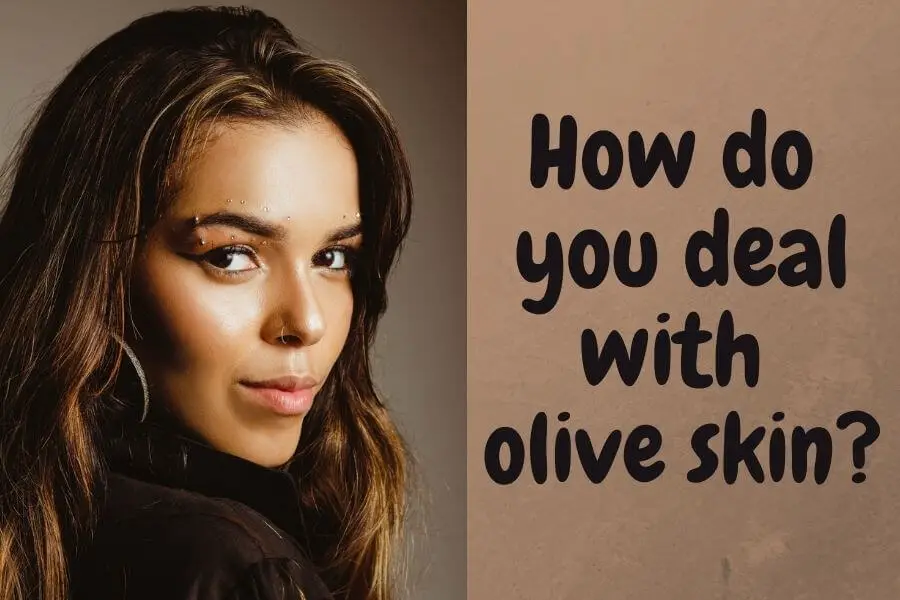Olive skin is arguably the most versatile type of skin when it comes to beauty. You can pretty much rock any look, whether you’re going for a natural or glam vibe. However, that doesn’t mean there aren’t some challenges associated with having olive skin.
Olive skin can be difficult to deal with, but with the right products and techniques, you can enhance your olive skin and make it look its best.
One of the biggest ones is figuring out how to deal with your complexion’s tendency to get oily. Fortunately, we’ve got you covered! Keep reading for our top tips on how to manage oily olive skin.
Oily Skin
Because olive skin is so versatile when it comes to beauty, this means that you are blessed with the ability to rock a ton of different looks. Unfortunately, oily skin can be a challenge when it comes to wearing certain makeup looks or when attempting to rock certain looks.

Fortunately, there are some quick and easy changes that you can make in your daily routine which will help balance out your complexion’s natural oil production.
Tip 1
For starters, it’s important that you invest in a good cleansing regimen for oily skin. While most cleansers are great at dissolving dirt and oil on the face, many do not actually target your skin’s naturally occurring oils which can result in an overly dry complexion – especially if you have naturally dry skin.
To avoid this, look for cleansers which are formulated to target your skin’s natural oils while being gentle enough not to strip your skin completely bare
Tip 2
Another great idea is to use a toner after cleansing. Many people don’t think that they need toner because their face doesn’t feel dirty after cleansing. However, toner can help keep your skin balanced by ridding it of any miniscule amounts of dirt and oil that may have escaped the washcloth during the washing process.
And if you’re worried about making your skin too dry or irritated, opt for an alcohol-free toner loaded with hydrating agents like ceramides and glycerin.
Highlight/ Contour Brush: If you’ve ever done any sort of makeup in your life, you’ve probably heard of highlighters and bronzers. While both can be used to enhance certain features on the face, they also serve different purposes which is why we recommend using a separate brush for each one.
Bronzers: Bronzers are designed to help add some warmth back into your complexion after contouring by adding a bit of color along the cheekbones and nose.
Highlighters: Highlighter’s purpose is to draw attention towards specific areas such as under the brow bone or down the center of the nose
Blush Brush Blusher (powder): Pale pink and peach shades work best with olive skin tones while cranberry shades help add a natural glow to olive skin.
Blusher (cream): A good cream blusher is a great way to add some color while keeping your pores clear of clogged dirt and oil. It’s also a great option for those who simply don’t like using powder blush.
Tip 3
Oily skin is also an incredibly common occurrence and can be caused by a variety of different things including –
- genetics
- stress
- hormones
- environmental factors such as pollution and UV exposure
The latter’s especially problematic during the summer months when many people spend more time outdoors than they typically do.
And if you’re not wearing sunscreen regularly, this will significantly increase the speed at which your complexion produces excess oil, which means that it’s even more important to invest in a good SPF which can help prevent acne and hyperpigmentation.
Tip 4
Olive skin is often associated with rosacea as well as acne, but that doesn’t mean that it’s going to be easy to deal with or that you have to walk around looking like a pizza-faced teen.
In fact, if you’re willing to put in the work, you’ll find that there are a variety of different treatments which can actually help reduce the appearance of some of your complexion’s more frustrating blemishes.
To resolve acne, look for cleansers which will not only cleanse your oily skin of excess dirt and oil but also target acne causing bacteria on the surface of your skin.
Can olive skin be cool toned?
Even though olive skin is technically a warm tone, there are ways to make it look more on the cooler side. Plus, cool tones always look great in the fall and winter seasons.
The first step is to know how to dress like a cool toned person. Dress in colors like grey and navy blue, and accessorize with scarves and hats
Wear lighter colors on the bottom half of your body, such as cream and white, to balance out any darker color choice you may have for tops .
Is olive skin prone to hyperpigmentation?
Yes! Hyperpigmentation or dark spots is a common problem that people with warm undertones of olive skin face. While dark spots can be caused due to various reasons, two prominent causes include sun exposure and hormones
To avoid hyperpigmentation, make sure to protect yourself from harmful rays by investing in a good sunscreen that contains about 50 SPF. A good sunscreen will prevent your skin from tanning as well as discoloration. You could also opt for an antioxidant-rich product to keep your skin bright and healthy.
Other than that, exfoliation is one of the most important steps for this skin type. Exfoliating helps remove the top layer of dead cells on the surface of your skin, revealing a more glowing complexion underneath.
A good moisturizer is also vital for this skin type as olive skin tends to look dry over time. Look for a moisturizer that contains SPF that will neutralize any free radicals caused by sun exposure
So if you are craving some more color on your face but don’t want to go overboard with contouring, dying your hair with warm colors like browns or burgundy instead can help create an illusion. If you’re really feeling adventurous, highlights are another great way to make your skin look more natural and radiant.
However, dying your hair is not recommended if you are looking for a break from the seasonal color change.
Eat well, drink plenty of water, wear sunscreen regularly and wear hats if you have to spend prolonged periods of time outdoors – and everything should be okay.
Final Thoughts
So, to sum up, olive skin can be both a blessing and a curse. The key is to find the right products and treatments for your individual skin type and needs. Remember that when it comes to taking care of your skin, there is no one-size-fits-all solution.
By experimenting with different products and techniques, you’ll eventually find what works best for you.
If you are diligent about your skincare routine – making sure to use sun protection every day and exfoliate regularly – then it’s possible that you too can have great skin like Sophia Vergara.

